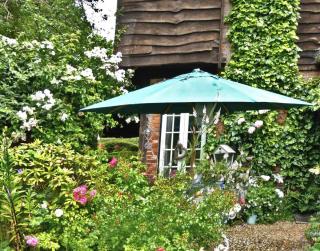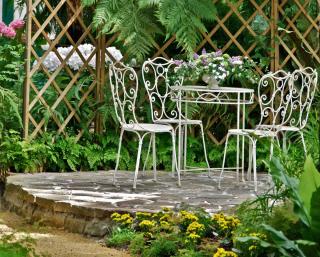

Small gardens, patios, urban gardens, subdivisions… Whenever buildings line the garden left and right, very often you’re left with a long strip of greenery to populate. Not an easy feat to landscape a long, narrow garden! Here are 5 key tips to turn that thin, linear space into an opportunity.
Read also:

At the turn of the path, a cozy garden furniture sets awaits, perhaps against the backdrop of a vine-covered pergola. Through or around the pergola, a new path runs into an open clearing, where a small, tidy lawn can serve for both sunbathing and literal bathing, in a small swimming pool for example. Structuring your garden into zones that offer distinct atmospheres and serve different purposes is an excellent way to convert a boring urban space into a modern, contemporary landscaped garden.

Regarding hedges, best maximize evergreen shrubs such as privet, Pittosporum or Mexican orange. Their perpetually green and lustrous foliage is joined in season with fragrant white or rosy flowers. As for climbing plants, ivy or star jasmine will for sure exquisitely cover a lattice or arbor in both sun and shade. If you favor view breakers instead, opt for designs that have patterns that are colorful and unique!

And if you work an opening through the center or to the side, you can even make them span the entire width of the garden! Around an arch, twirl climbing vegetables such as beans or squash like the smaller red kuri. Arbors and arches will free space on the ground and growing plants vertically will greatly populate the area. You can even use natural staking for your beans and squash: simply plant corn and they’ll climb right up the stalk without compromising the corn harvest!

Let’s say you want to set up 5 garden areas: barbecue and dining area, walkway, garden furniture set, another walkway, lawn.
As you start playing with artificial mounds and lower spots, you’ll completely transform how you appreciate your garden. Instead of a drab, boring strip, welcome to a constellation where each cocoon fits a different mood!
Plants throughout the entire garden will soften the hard, dry length of the garden. Lush growing beds full of perennials, grasses and shrubs will surround you with nature’s regenerative powers.
Feel free to pair opposing textures. For example, pair the light and elegant Deschampsia together with the arching straight lines of ornamental onion. Use taller evergreen shrubs in the background such as silverberry and surround it with Artemisia on the sunny side and Helxine in the shade. Pop in a few brightly colored blooms like rudbeckia, bellflower, lupine, aster, beeblossom, yarrow…
Remember to plan your garden areas with regards to seasons, too. A cool place in summer might turn rather cold in winter!